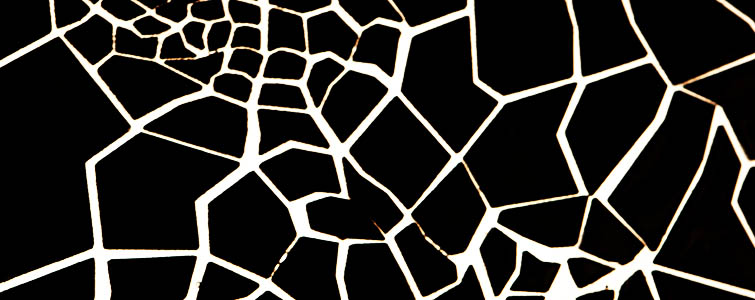19. January 2014
Digestive Concrete
In our course module ‘Digital Fabrication Methods’ we had to choose a material and a processing technique from a previouse in class developed mophological box. My material was ‘concrete’ and my processing technique ‘digestion’.
During my research I analysed the microscopic structure of concrete and the human digestive system. Surprisingly, I got bored by the microscopic structure of concrete which led me to analyze the cracks. On the other hand I got fascinated by the interesting rubbery looking ‘villus’ of our digestive system.
 Computational Designs
Computational Designs
The task during the first week was to get to know ‘Rhino’ (modeling tool for designers) and how to user the ‘Ultimaker’ (3D-Printer) with ‘Cura’ (preparing tool for the 3D-Printer).
 Computational Designs
Computational Designs
 First Ideas and Main Concept
I wasn’t appealed by the microscopic structure of concrete so I decided to deal with the cracks of the smooth concrete surface which appears to be a very nice contrast. During my research I came across special concrete bacterias which produce chalk while in contact with oxygen. I tried to find a connection between the digestive system and them. What would happen if I change the chalk producing bacterias with rubber producing bacterias (derived from the rubbery looking ‘villus’) which are used in the tire industries? It would become more and more flexible every time a crack appears. This was my first real idea and I gave it a try.
First Ideas and Main Concept
I wasn’t appealed by the microscopic structure of concrete so I decided to deal with the cracks of the smooth concrete surface which appears to be a very nice contrast. During my research I came across special concrete bacterias which produce chalk while in contact with oxygen. I tried to find a connection between the digestive system and them. What would happen if I change the chalk producing bacterias with rubber producing bacterias (derived from the rubbery looking ‘villus’) which are used in the tire industries? It would become more and more flexible every time a crack appears. This was my first real idea and I gave it a try.
 Modelling and Fabrication process
The following pictures show the developing process during the second week.
First I tried to use silicon with plastic but it didn’t stick together. Unlike wood, it was perfect. Easy to cut and it worked very well with silicon. I also used cement to look how it would act with the real material. Cracks always have a reason why the look like the do. So I tried to simulate the crack structure with a developed styrofoam bump-map.
Modelling and Fabrication process
The following pictures show the developing process during the second week.
First I tried to use silicon with plastic but it didn’t stick together. Unlike wood, it was perfect. Easy to cut and it worked very well with silicon. I also used cement to look how it would act with the real material. Cracks always have a reason why the look like the do. So I tried to simulate the crack structure with a developed styrofoam bump-map.
5. Final Outcome
In the end I ended with a silicon structure skin derived from concrete cracks combined with the rubbery looking ‘villus’ of our digestive system. I could be used as an urban method to put buildings and nature more in harmony or as an textile oder industrial design atempt for furnitures etc.
I created a light mapping on the single shapes in hope to show the organic and living look of the structure.




